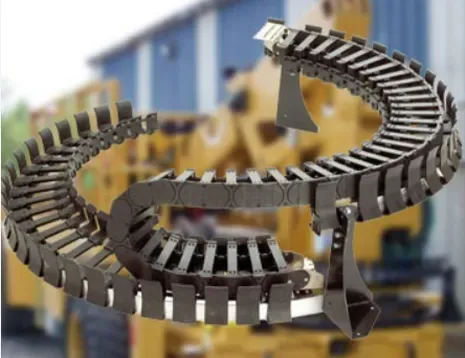cable drag chain
Understanding Cable Drag Chains An Essential Component for Smooth Operations
In various industries, the efficient movement of cables and hoses is crucial for maintaining productivity and safety. One solution that has been widely adopted in this area is the cable drag chain, also known as a cable carrier or energy chain. This device plays a vital role in protecting cables and hoses while allowing them to move freely with machinery and equipment. This article delves into the features, benefits, and applications of cable drag chains.
What is a Cable Drag Chain?
A cable drag chain is a series of interconnected links that form a flexible, open trough or channel through which cables and hoses can be routed. The design allows for the cables to move back and forth mechanically, reducing wear and tear and preventing tangling or damage. Typically made from durable materials like plastic, steel, or aluminum, these chains come in varying sizes and configurations to accommodate different types of cables and environmental conditions.
Why Use Cable Drag Chains?
Cable drag chains offer numerous advantages that make them a preferred choice for many industrial applications
1. Protection The primary function of a cable drag chain is to protect cables and hoses from abrasion, crushing, and environmental factors. By housing the cables within a protective chain, they are shielded from potential hazards that could compromise their integrity.
2. Organization Cable drag chains help to organize cables neatly, preventing tangles and making maintenance easier. This organization is particularly crucial in complex machinery setups where numerous cables are in close proximity.
3. Improved Durability By allowing for controlled movement, cable drag chains reduce the stress placed on cables and hoses during operation. This can significantly extend the lifespan of electrical and hydraulic systems.
4. Flexibility and Adaptability Drag chains can be customized to fit specific applications, accommodating various cable sizes and types. They can also be installed in numerous orientations, making them versatile in different setups like robotics, CNC machines, and conveyor systems.
cable drag chain

5. Reduced Noise and Vibration The movement of cables within a drag chain system is often quieter than loose cables flapping or rubbing against surfaces. This reduction in noise can contribute to a more pleasant working environment.
Applications of Cable Drag Chains
Cable drag chains have a wide array of applications across multiple industries
- Manufacturing In assembly lines, automated machinery frequently moves, requiring flexible cable management solutions. Cable drag chains ensure cables stay in place, promoting efficiency and safety.
- Robotics Robots often have dynamic movements that can stress cables. A drag chain accommodates these movements while protecting sensitive wiring and fluid lines.
- Construction and Mining In rough environments, where equipment operates under harsh conditions, dragging chains provide robust protection against the elements and heavy machinery wear.
- Entertainment In stage productions, cable drag chains help manage rigging wires and lighting cables efficiently, contributing to the smooth operation of complex lighting and sound setups.
- Aerospace and Automotive In industries where precision is crucial, cable drag chains maintain organized cabling in moving parts, such as in robotics and assembly lines.
Conclusion
Cable drag chains are more than just a mechanical solution; they are integral to enhancing operational efficiency and safety in diverse settings. By protecting cables and hoses, providing organization, and allowing for flexible movement, these chains contribute significantly to the performance of machinery and automation systems. As industries continue to evolve and grow, the role of cable drag chains will remain central in ensuring that operations run smoothly and effectively. Investing in quality cable drag chains is not just about equipment; it’s about optimizing productivity and extending the life of critical systems. Whether in manufacturing, robotics, construction, or entertainment, the presence of cable drag chains underscores the importance of innovation in industrial design and engineering practices.








